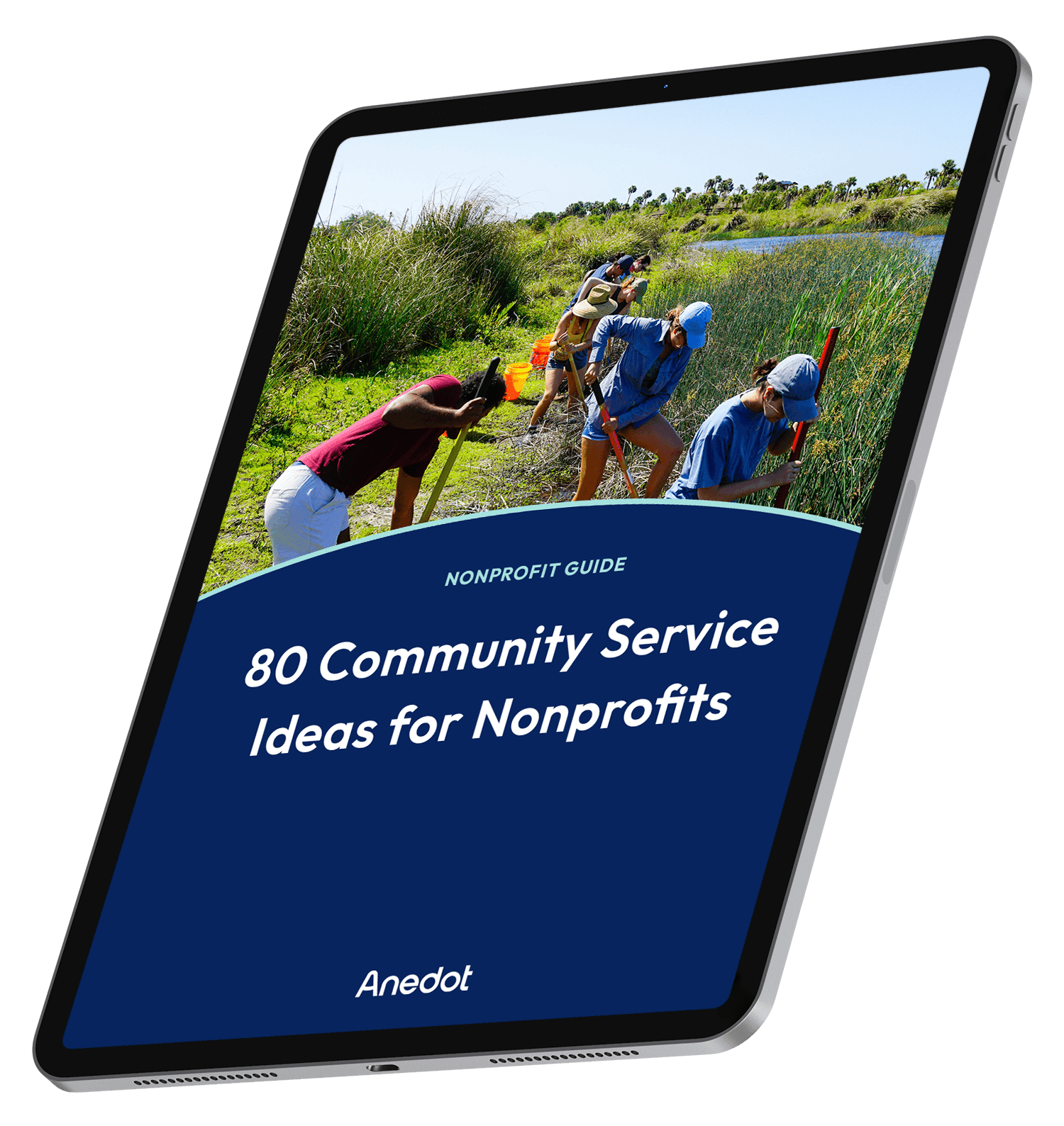When you are fundraising for a nonprofit, the donation isn't the end of the relationship-building process.
Unfortunately, donor retention has been on the decline.
In 2019, the donor retention rate was 45.4%, and that dropped to 43.6% in 2020.
The retention rate among repeat donors was down 7.2% in 2021.
With over 40% of donors giving more than once, and retention rates on the decline, the importance of thank you letters is always increasing.
Every thank you letter is not just an act of gratitude from your organization - it also directly impacts your revenue.
Here's a guide on how to write a thank you letter for donations to show gratitude, explain that donor's impact, and encourage them to engage with your organization again in the future.
Define the who, what, and why of writing donation letters

Before you begin writing a thank you letter, you should consider who gave, what they gave, and why they gave.
In order to have an easily replicable process, you should consider segmenting your donors.
If you are working with a high volume of donations, it may be difficult to write a personalized thank you letter to every donor.
That's why it's important to have your donors segmented in your email marketing efforts so you can easily reproduce thank you letters depending on the donor.
Who
When you look at who gave, you should be asking some questions:
- Do I know this person and have anything personal I can include in this letter?
- Do we have data to suggest what this person cares about?
- Would the donor prefer a letter from a specific team member or surrogate for your organization?
These personal notes can often be woven into parts of your thank you letter, even if the letter is mostly based on a template.
You should consider segmenting your donors to help with the letter-writing process.
You can segment your donors by:
- Gift Amount
- Location
- First-Time vs. Long-Time
- One-Time vs. Recurring
What
There are many different ways someone can give.
It can be a small credit card donation, large check, estate pledge, or cryptocurrency donation.
These details are extremely relevant as you look to personalize a thank you letter and offer potential opportunities for engaging again in the future.
Why
Each donor has a very personal reason for giving.
This reason could be tied to a specific campaign, a connection to a fellow supporter, an emotional reason due to life experiences, or ideological alignment.
If you know that reason or can track their donation to a specific initiative, then you can customize the text to reflect that you understand their motivations.
How to build a thank you letter template for donations

When writing a thank you letter, there are best practices that you will want to follow.
Building specific templates for different types of donors can help make the letter-writing process easier, even if you are highly customizing the letter.
In the letter, you should consider using this framework:
1. Introduction
- Re-statement of the gift amount
- A reminder of the purpose of the organization
- A reminder of the campaign/effort they gave towards
2. Impact Story
- An example of the work your organization has done that was partially or fully powered by their contribution
3. Closing
- Personal connection
- Your contact information
- Offer for future engagement
Introduction
In the introduction of a thank you letter, you should recap the donation that they just made.
This includes the gift amount and the initiative they gave to.
If it's a first-time donor, you should also remind them of the purpose of your organization.
Some people give to many organizations.
Occasionally at Anedot, we receive calls from donors who didn't remember who they gave to a month or two in the past.
The thank you letter helps remind a donor of why that impact matters.
Here's an example of what an introduction could look like:
Hi Donor,
Thank you so much for your donation of $25 to Organization to help fund our new building. Volunteers and donations like yours help power our ability to feed hundreds of members of our community. Our only limitation right now is the size of our space, and your contribution will help go a long way towards allowing us to serve more people.
Your language will differ depending on your organization, the initiative, and the donor. However, it covers all of the points mentioned in the framework.
Pro Tip: Many times, someone's official name will be on a donation, but they will go by a nickname.
If you know the nickname, you should have the official name typed in, but cross it out in handwriting and put in their nickname.
This makes it clear that even though the donation came in from their official name, they're not just a number to you.
You know that they like going by Jake or JP instead of Jacob.
This small touch can make a huge difference.
Impact Story
People are asked for money consistently by a variety of groups.
One of the reasons they forego donations is because they don't understand if their donation has a real impact.
"Am I just paying for administrative costs?"
While every organization needs volunteers and staff, donors often want to know how the organization is furthering their mission with your group.
The impact story helps explain the value of their gift.
It is essentially a narrative of how donations like theirs helped in a specific way.
This can be helping a person, successfully advocating for an issue, or anything else tied to your mission statement.
For example, if you are a Humane Society, you could talk about a specific animal you helped give a good home.
Or a family who was made better by an animal adopted from the organization.
It should be very detailed where someone understands the perfect example of how the organization accomplishes the mission.
For an advocacy organization, you likely know the cost of an advertisement or the cost of collecting a petition signature.
You could divide their contribution by that cost and say "your contribution helped us collect 10 more signatures."
With the impact story, you're painting a picture for the donor so they more clearly understand why giving to your organization matters.
Closing
The closing gives you the opportunity to add further personalization if you know the donor personally.
It also lets you make it clear to the donor that this is not being sent "on behalf of an organization" but from a real person.
If the letter is signed by the Chairman of the organization, they should include the name and contact information for the development director or someone else responsible for fundraising.
The donor should have a point of contact they feel comfortable speaking with on a regular basis.
You also have the opportunity to include a follow-up call to action.
That can include asking them to share the message with a friend or family member, a notice about an upcoming event, or other opportunities to get involved with the organization.
Pro Tip: The author of the writer hand signing the letter adds a personal touch that can make a difference.
They can also write a small handwritten note at the end that could be unrelated to the donation.
For example, if you or someone else is Facebook friends with the donor, you could say P.S. congratulations on the job promotion!
Adding in acknowledgment of them goes a long way to building a two-way relationship.
When to send out your thank you letter for donations

Your thank you letters need to be prompt.
Many organizations hold thank you letters to once a quarter to balance workload, but this makes the letters feel very impersonal.
Ideally, you would send out thank you letters within a week of receiving the donation.
If you wait longer than a month, it will feel more like the letters have been batched and that they're just another name in the database.
Closing thoughts

Thank you letters are critical to building a relationship with your donors and converting the 50+% of donors who churn.
While handwritten thank you letters cannot be replaced by email, digital giving is still very important and helpful to all donors.
When donors give online, they can receive an immediate email receipt that gives you more time to send a personal letter.

80 Community Service Ideas for Nonprofits





















